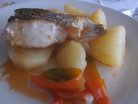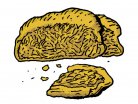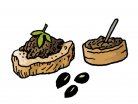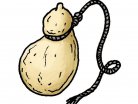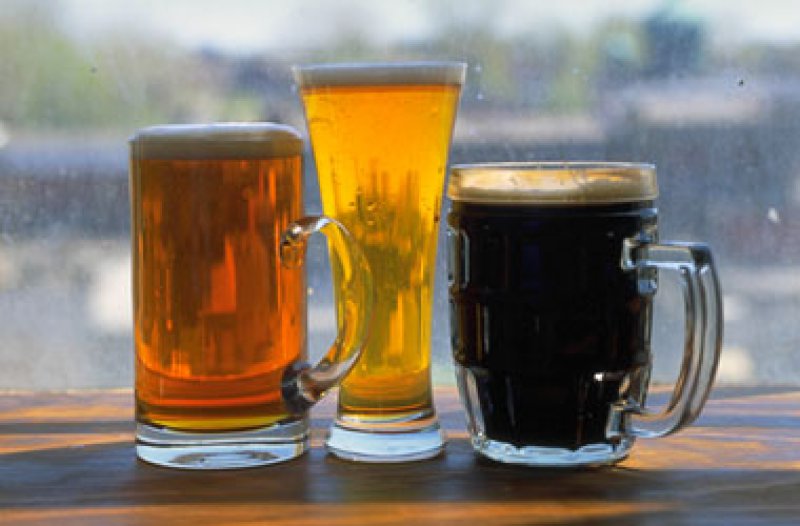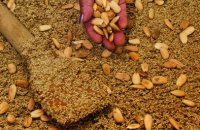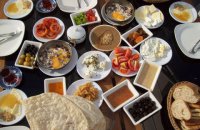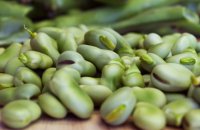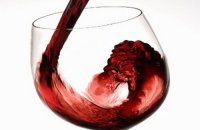Start with a clean glass—very clean. If there are bubbles clinging to the side, it's not clean. The dirt provides nucleation sites for bubbles, which will drain a beer of its fizz prematurely. Modern dishwashing detergent is pretty good, so this shouldn't be too tough. If you're washing by hand, make sure the detergent is thoroughly rinsed; if not it can collapse the head. And be sure to dry the glass by hand as well, because minerals from dried-up water spots can count for dirt.
The choice of glassware has of late been made into a pseudo science as tricky and opaque as quantum chrome dynamics, with a numbing variety of strangely shaped vessels accompanied by dire warnings lest you commit the unforgivable faux pas of serving, say, a Lambic in a gueuze glass. As much a fan of drinking glasses as I am, I have to tell you this is a rather modern conceit, concocted in the last half of the twentieth century. Before about 1750, little distinction was made between even wine and beer with glasses holding whatever was being passed around the table. People felt lucky to have a glass at all.
However, in some countries brewers are very particular about the serving methods used for their beers, even specifying the glass shape. In Belgium, every beer has its own glass, and in some bars if the proper glass is already in use, you'll have to pick another beer. Of course glass selection is not all frippery. Certain styles do show well in their "traditional" glassware, but you should treat these suggestions for what they really are, and not inviolable laws.
Most important is matching glass size to beer strength. You wouldn’t (well shouldn’t) drink barley wine by the pint, so small glasses are best. The strong October beers of England were drunk from glasses holding barely 2 ounces. Some beers have a lot of carbonation, which demands a glass with some additional head space. Topers in Berlin quaffed their low-alcohol weiss bier from huge tumblers holding a gallon or so, capacious enough for an immense bouffant of foam. It is best to pour out all of a bottle of home brew at one time, as the yeast is almost always unattractive and sometimes adds a muddy taste, so having a large enough glass is very important. Having some extra headspace also allows for aromas to collect, giving the sniffer a sniffable experience.
Various tapers can either compact or support the head. A Pilsener glass with its ice cream cone shape supports a large, fluffy head. Inward tapering glasses will force the head together as it rises in the glass, as well as helping to keep the aroma inside the glass. A tulip-shaped glass both concentrates and supports the head.
If you're doing a judging or critical tasting, a 6-ounce wineglass is the internationally approved standard for beverage sensory analysis, but given the nature of most homebrews judging, simple hard plastic cups are a necessary evil.
Serving temperature is also very important. To some degree this is dictated by tradition -cellar temperature for British real ales, for example- but generally weaker beers are served cooler than stronger ones. A fine, fruity British ale will taste weird and lifeless if served ice cold. So will a German lager for that matter, which is why they're served at about 45° F (7° C). Dark, malty, or strong beers may be served warmer than pale ones. High carbonation levels require colder serving temperatures to prevent over foaming.
Pouring: Pour right down the middle of the glass. You want to release some carbonation and get a good head going. Let it settle, and keep pouring. Patience will be rewarded with a dense, long-lived head and a less gassy beer.
Storage: Cool and dark is the rule here. But the truth is that most home brew is at its prime some time before you get your hands on it. If you've ever tasted beer at the brewery, you know this. Nonetheless, proper storage can keep deterioration at a minimum.
Keep lagers cold: The cold conditioning of these styles is an essential part of the brewing process. To do this correctly requires a temperature-controlled environment such as a dedicated refrigerator.
Keep ales cool: A basement is the ideal location. Storing ales at near-freezing temperatures will cause a harmless but unsightly protein haze to develop, interfering with the perfect drinking experience. All the processes of aging in beer are accelerated by heat, so keep your beer away from radiators and o hot spots.
Avoid temperature changes: Repeated heating and cooling will cause the protein complexes in beer to destabilize and come out as haze. One trip in and out of the fridge won't kill a beer, but try to avoid temperature swings if you can. In the East and Midwest, cellars serve well for cellaring. Elsewhere, a closet or room towards the center of the home will have to do until you add that second refrigerator. In warmer climates, space in wine storage lockers is available for rent at reasonable prices.
Avoid light: Sunlight and fluorescent tubes shine with a lot of blue-green light that can quickly turn a beer "skunk". Brown bottles are good protection, but green ones generally stink. And where there’s light, there’s often heat, which is bad for beer.
Give it time: Most beer is not really meant for long-term storage, but most homebrews benefits from a few months of aging. Obviously, since the word "lager" means "to store", such beers benefit from between two months to a year of cold storage. Very strong beers such as barley wines and imperial stouts really need a year at least, and sometimes are splendiferous at ten.
Beer serving temperatures
- Pale Lager 40-45° F (4.5 -7° C)
- Dark Lager 45-50°F (4.5 -10° C)
- Strong Lager 50-55°F (10-13° C)
-
Wheat Beers 40-50° F (4.5-10° C)

- Real Ale 50-55° F (10-13° C)
- Cream, Blonde Ales 40-45° F (4.5-7° C)
- Belgian Abbey Dubbel 50-55° F (10-13° C)
- Belgian Pale Ales 40-45° F (4.5-7° C)
































